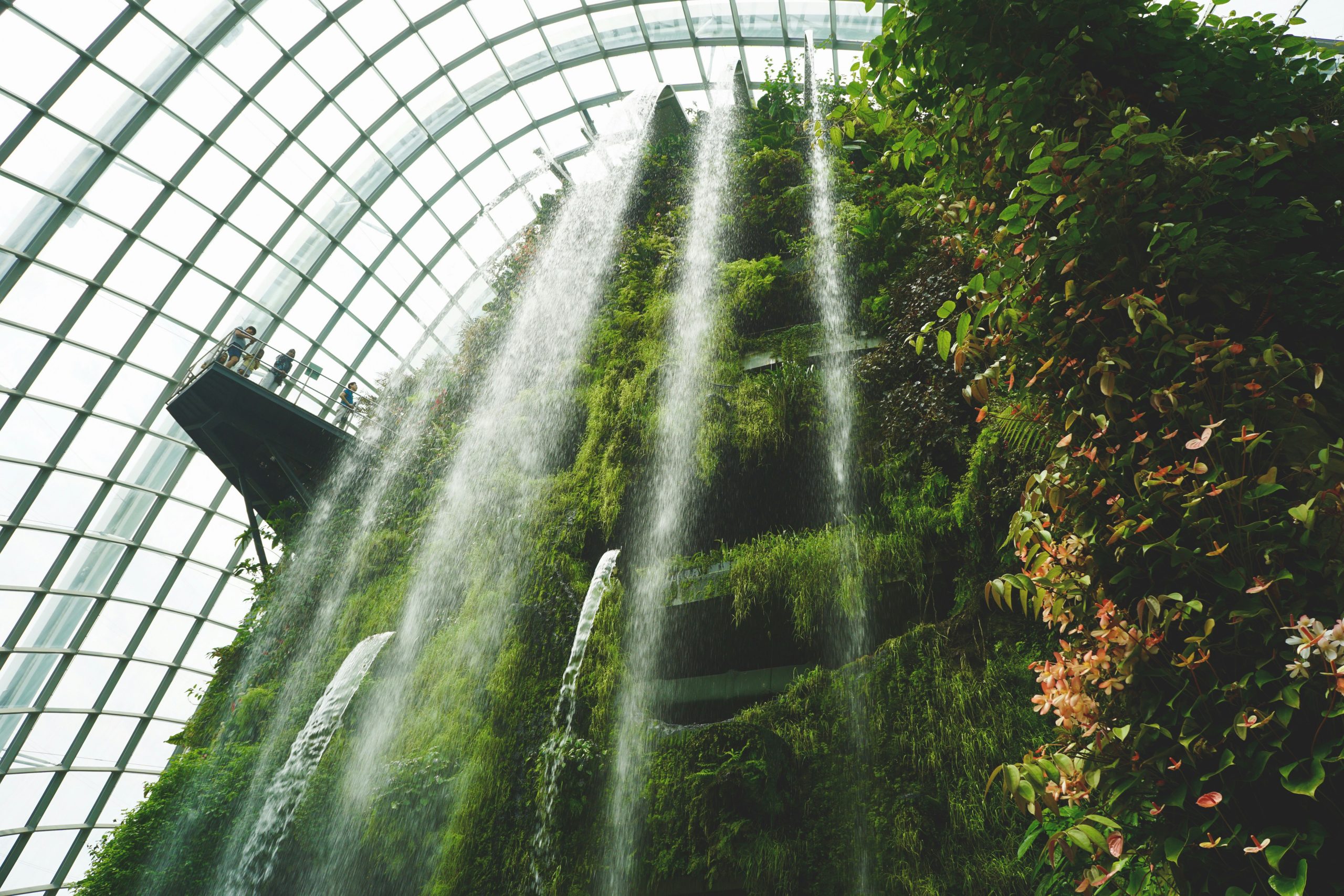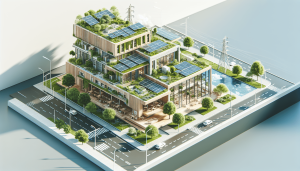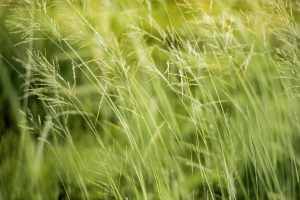In our quest for more eco-friendly living, we’ve come to realize just how crucial the role of vegetation is in sustainable architecture. Vegetation doesn’t just enhance the aesthetic appeal of our buildings; it also plays a vital role in reducing carbon footprints, improving air quality, and regulating indoor temperatures. By incorporating green roofs, living walls, and strategically placed plants, we can create spaces that are not only visually pleasing but also energy-efficient and environmentally responsible. This article dives into the multifaceted benefits of integrating flora into our built environments, providing insights and practical examples of how we can achieve more sustainable living through thoughtful architectural design.
By embracing vegetation in our architectural endeavors, we’re paving the way for greener, healthier, and more sustainable communities. Have you ever wondered how the lush greenery around new buildings not only beautifies but also contributes to sustainability? Welcome to our exploration of the role of vegetation in sustainable architecture. In this article, we’ll delve into how plants and green spaces are becoming integral parts of modern architecture aimed at addressing environmental challenges.
We often enjoy the aesthetic appeal of a green facade or a rooftop garden without fully grasping the benefits they bring to our lives and environment. But there’s much more to vegetation in architecture than meets the eye. Let’s explore how incorporating greenery into building designs can create a healthier, more sustainable world for us all.

Introduction to Sustainable Architecture
What is Sustainable Architecture?
Sustainable architecture refers to designing and constructing buildings with a focus on minimizing environmental impact. This includes efficient use of resources, energy conservation, and reducing waste. Sustainable architecture aims to create spaces that are healthy for inhabitants and harmonious with the surrounding ecosystem.
Why is it Important?
The importance of sustainable architecture cannot be overstated. As our world faces climate change, resource depletion, and increasing urbanization, the necessity to create buildings that contribute to environmental well-being is more crucial than ever. Sustainable architecture helps reduce our carbon footprint, promotes renewable energy, and ensures we leave a healthier planet for future generations.
The Role of Vegetation in Sustainable Architecture
Aesthetic and Psychological Benefits
The inclusion of vegetation in architectural designs significantly enhances the aesthetic appeal of buildings. Green rooftops, vertical gardens, and landscaped surroundings create visually pleasing environments.
Additionally, the psychological benefits are noteworthy. Studies have shown that exposure to green spaces can reduce stress, improve mood, and boost overall mental well-being. These effects contribute to a more comfortable and inviting atmosphere within urban settings.
Improving Air Quality
One of the most critical roles of vegetation in sustainable architecture is air purification. Plants absorb pollutants and release oxygen, significantly improving the air quality in their immediate vicinity. Consider the following table showcasing common pollutants and how certain plants can help mitigate them:
| Pollutant | Source | Plant Type | Purification Potential |
|---|---|---|---|
| Carbon Dioxide | Vehicles, Industrial Emissions | Spider Plant, Aloe Vera | High |
| Formaldehyde | Building Materials, Furniture | Ficus, Bamboo Palm | Medium |
| Benzene | Tobacco Smoke, Synthetic Fibers | English Ivy, Dragon Tree | High |
| Trichloroethylene | Cleaning Products, Paints | Peace Lily, Rubber Plant | Medium |
By strategically placing plants that can absorb these pollutants, we can enhance the air quality in and around buildings, contributing to healthier living and working environments.
Temperature Regulation
Vegetation plays a crucial role in regulating building temperatures. Plants provide natural insulation and shade, reducing the need for artificial heating and cooling systems. This not only conserves energy but also translates into significant cost savings.
Green Roofs
Green roofs are an excellent example of how vegetation aids temperature regulation. They insulate buildings, keep interiors cooler during summer, and reduce heat loss during winter.
Reducing Urban Heat Island Effect
The urban heat island effect refers to urban areas experiencing higher temperatures than their rural counterparts due to human activities and structures that absorb and retain heat. Vegetation can help mitigate this by providing cooling through shade and transpiration.
By incorporating more green spaces in urban designs, we can counteract the heat island effect, resulting in more comfortable and liveable cities.
Enhancing Biodiversity
Green architectural designs provide habitats for various species, promoting biodiversity.
Green Walls and Facades
Green walls and facades are vertical structures adorned with a variety of plants. They offer habitats for insects and birds, contributing to urban biodiversity. These structures also act as sound barriers and help reduce noise pollution.
Practical Implementations of Vegetation in Sustainable Architecture
Rooftop Gardens
Rooftop gardens transform unused space on building rooftops into vibrant gardens.
Benefits
- Energy Efficiency: Provides natural insulation, reducing heating and cooling costs.
- Water Management: Absorbs rainwater, reducing runoff and decreasing the burden on drainage systems.
- Urban Agriculture: Enables the growth of fruits, vegetables, and herbs, contributing to urban food production.
Vertical Gardens
Vertical gardens or green walls are gardens grown on the vertical face of a building.
Benefits
- Space Efficiency: Maximizes green space in densely populated urban areas.
- Air Purification: Plants in vertical gardens can absorb pollutants and improve air quality.
- Insulation: Adds an extra layer of insulation to buildings, aiding in temperature regulation.
Community Green Spaces
Community green spaces, such as parks and shared gardens, offer places for social interaction and recreation while contributing to sustainable urban design.
Benefits
- Social Well-being: Provides spaces for relaxation, exercise, and community events.
- Environmental Education: Promotes awareness and education about the importance of nature and sustainability.
- Biodiversity: Supports local flora and fauna, enriching urban biodiversity.
Challenges and Solutions
Structural Challenges
Incorporating vegetation into building designs can pose structural challenges. It requires additional support to handle the weight of soil, plants, and water.
Solutions
- Engineered Systems: Use lightweight soil alternatives and engineered growing systems to minimize weight.
- Reinforced Structures: Incorporate reinforced support structures in the design phase to handle additional loads.
Maintenance
Maintaining green roofs, walls, and gardens requires ongoing care including watering, pruning, and replacing plants.
Solutions
- Automated Systems: Install automated irrigation and monitoring systems to ensure plants receive optimal care with minimal manual intervention.
- Native Species: Use local, drought-resistant plants that require less maintenance and are better adapted to the local climate.
Cost
The initial cost of integrating vegetation into architecture can be high, deterring some developers.
Solutions
- Long-term Savings: Emphasize the long-term savings from energy efficiency, reduced healthcare costs due to improved air quality, and increased property value.
- Incentives: Utilize government incentives, grants, and funding programs aimed at promoting green building practices.

The Future of Vegetation in Sustainable Architecture
Innovative Technologies
Advancements in technology are creating new opportunities for integrating vegetation into building designs.
Smart Gardens
Technologies like IoT-enabled sensors and automated systems can monitor plant health, soil moisture, and light levels to optimize vegetation care.
Biophilic Design
Biophilic design focuses on creating buildings that connect occupants more closely with nature. This concept can be further enhanced with technology to create immersive, nature-inspired environments.
Urban Agriculture
Urban agriculture integrates food production into urban areas, utilizing vacant lots, rooftops, and walls.
Benefits
- Local Food Production: Reduces the carbon footprint associated with transporting food.
- Community Engagement: Encourages community involvement and education in sustainable practices.
- Economic Opportunities: Creates jobs and entrepreneurial opportunities in urban food production.
Case Studies: Successful Integrations of Vegetation
Bosco Verticale (Milan, Italy)
Bosco Verticale, or Vertical Forest, is a pair of residential towers in Milan featuring nearly 900 trees, and 20,000 plants, including shrubs and flowering plants.
Benefits
- Biodiversity: Provides habitats for various species.
- Air Quality: Improves air quality through extensive vegetation.
- Climate Moderation: Regulates temperature and reduces heat island effect.
The Edge (Amsterdam, The Netherlands)
The Edge, known as one of the most sustainable offices globally, incorporates biophilic design by integrating plants and green spaces.
Benefits
- Energy Efficiency: Utilizes smart building technologies combined with green design to reduce energy consumption.
- Employee Well-being: Enhances productivity and well-being through exposure to natural elements.
- Water Efficiency: Includes rainwater harvesting systems to irrigate green spaces.

Conclusion: Embracing Vegetation for a Sustainable Future
The role of vegetation in sustainable architecture extends far beyond just adding beauty to our urban landscapes. It encompasses environmental, social, and economic benefits that contribute to healthier living spaces and a more sustainable future. By embracing vegetation in architectural designs, we can create buildings that are not only functional but also harmonious with nature, nurturing both human well-being and the environment.
As we look to the future, it becomes clear that the integration of green spaces, innovative technologies, and community engagement in urban design will be essential to address the pressing environmental challenges we face. Let’s invest in our green future, ensuring our cities are vibrant, sustainable, and thriving ecosystems.



